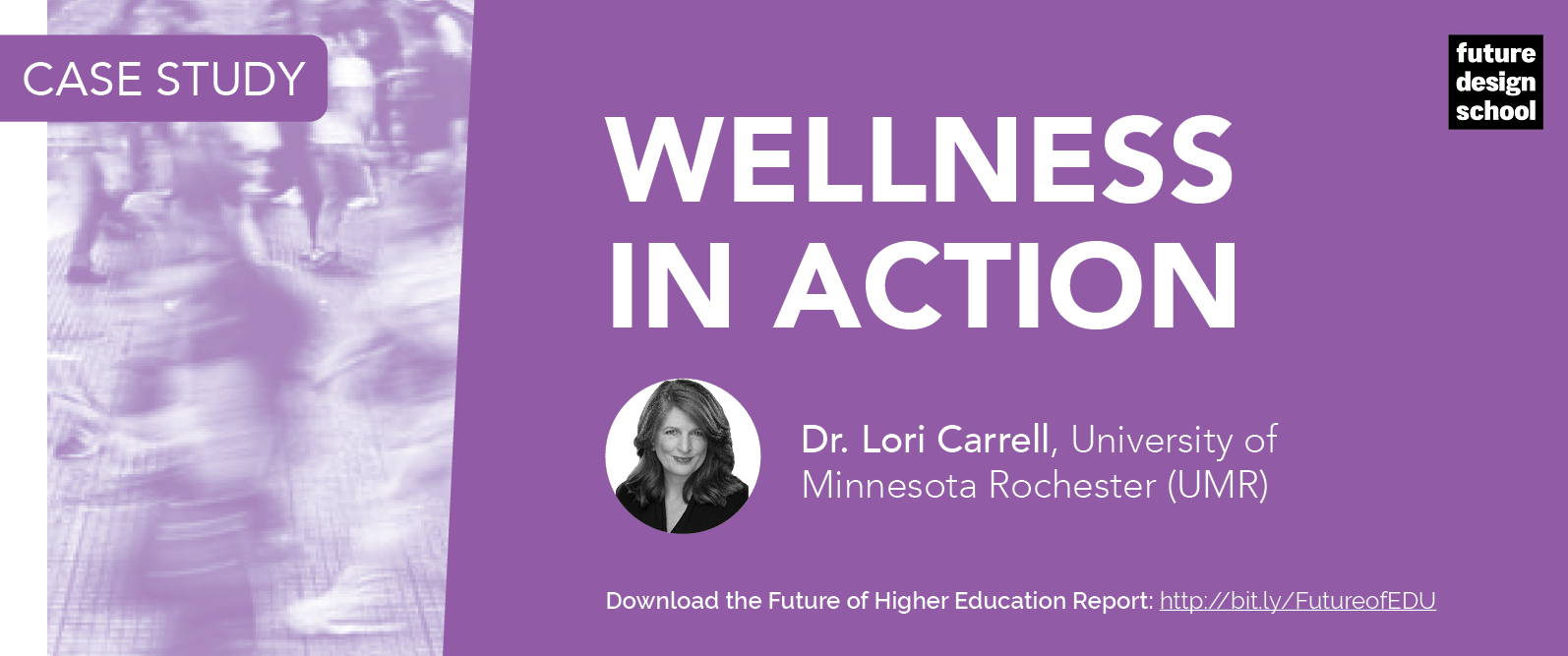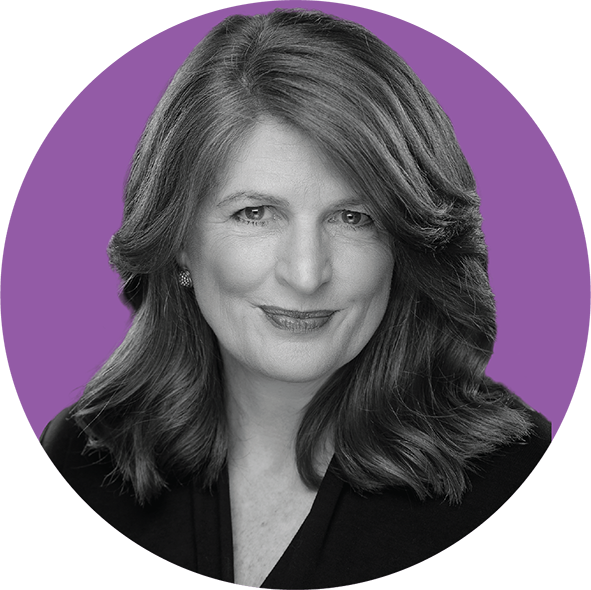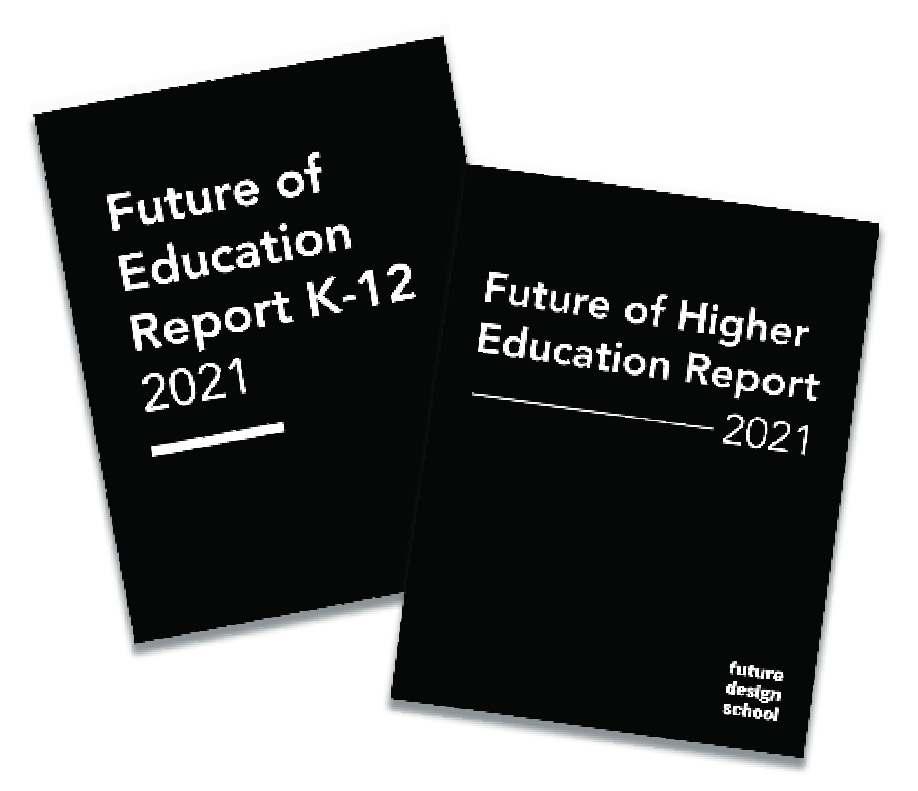
Excerpted from the Future of Higher Education Report 2021. Download your free digital copy to access the full report!
University of Minnesota Rochester (UMR) is a new institution with a strong focus on health and wellness — within the school itself, as well as outside its walls through its collaborations with and deep connection to the Mayo Clinic. In her role as Chancellor, Dr. Lori Carrell places an emphasis on equity and building community, and has implemented a wide range of innovative strategies to ensure that UMR is an inclusive and inspiring place to learn.
How do you continue to stay innovative, and apply those innovations across an institution?
We apply research to practice. We do that in everything — inside the classroom, outside the classroom — and have since our inception. We had the privilege to be a startup campus, so we could look at, for example, the list of high impact practices, and put those in place for 100% of the students. For example, early on, we were noticing that our students had a catalyst — some health experience, a challenge that happened in their childhood — that was fueling their passion to make a difference in the world through a career in health. We are health focused, so as soon as that was noticed, we began to study it, and then ultimately asked each student to write a passion statement in which they tell that story.Now, we give our scholarships based on a pitch where the student shares the story of their catalyst. What we’re assessing there, both quantitatively and qualitatively, is resilience. Getting to the variables that make a difference, like resilience, really does matter. So our recruitment and admissions process now includes that.

Dr. Lori Carrell
“Future Design School has this broad awareness of what’s happening globally that informs them to think about what is possible, and yet, to complement that, a really good project management at-scale kind of thinking — what would have to happen to get to this point?”
That’s one example. I’ll give one more, and that’s in the curriculum. The intersection of math and chemistry became of interest to our faculty researchers; they were looking at the benefits of delivering the math that was needed just in time for the chemistry. If that’s out of whack, students get hung up in both chemistry and math, and we know that math is generally one of those barrier courses. But when the math comes just in time for the chemistry that’s needed — when we just rearrange the sequencing of the topics — the students are much more likely to be successful and not to need to repeat something. That’s another way we use the research to inform practice.
Is there a trade-off? Is it harder for faculty to work in this way?
I don’t think there’s a trade off, because what are we about if we’re not about student learning and development? But there are philosophical shifts and existing barriers to doing it this way. In our environment, collaboration is honoured. Collaborative, interdisciplinary authorship is more important than solo or first authorship, and this policy changes everything. It’s an acknowledgement of how we roll around here, but it also changes the incentives away from being an independent contractor, to being part of an interdisciplinary team working together for the good of the student. I think there are a number of existing barriers that came to be — maybe over time, organically, but also out of a history of privilege and a certain latitude if one is a specialist or expert who has became disconnected from the primary purpose: educating real human beings, students, andbeing focused on students.
How does your approach impact student wellbeing?
It is documented that when students begin to continuously ruminate and doubt — to question, “Do I belong here if I’m struggling in basic math?” — it infiltrates all kinds of things like study habits, and social interaction, and on and on it goes.
One of the big components of wellbeing is our Success Coach program. Success Coaches build a relationship with a student that lasts the full four years, so you’ve got your go-to person who has broad expertise. So, rather than going to an advising center, a counseling center, and a career center, and finding whatever well-intentioned random human being is on staff that day, I have Jessica, or Cassidy, or Doug — I have my person, and they can do all of the above, and also assess if something in the mental health domain is more serious and needs further support, or if there’s a disability that needs accommodations.

For students, personal wellbeing and academic success and progress is all one thing. That’s not separate offices, and or separate parts of my psyche, so this Success Coach that deals with all matters of life and how they are entangled is a key to supporting wellbeing.
Is this structure scalable? Do you think a massive, more generalist institution could implement something like your Success Coach program?
The answer is yes, and it’s all in the structure. Right now, we have one interdisciplinary department: the Center for Learning Innovation, which houses the Success Coaches and the faculty across all the disciplines, and the faculty researchers who are looking at student learning and development and giving those results.
Everybody is collaborating together. It’s beautiful. So what would happen if we had 10,000 students, and that department was ten times its current size? What we envision is a structure where there are multiple learning innovation centers of interdisciplinary faculty, teams, and coaches assigned to subsets of the student population, intentionally overlapping with the research faculty.What’s critical to understand in that future structure is that those subsets of the population are themselves structured communities, and they are covenant based. It’s a privilege to get in as a student, and sign a covenant to care for each other and to support one another in all areas of wellbeing.
Ultimately, our students are going to be parts of interdisciplinary health teams, as practitioners or researchers, or policymakers or administrators, so now is the time to get started learning how to get along. So when I imagine this at scale, I see these living-learning communities that have a multicultural student body, bound by a covenant to one another and supported by a committed core of interdisciplinary faculty and a dedicated Success Coach. I can’t wait to see that come to fruition with our enrollment trajectory.

“Get ready! If you want to dream, and bring those dreams to reality — if you have problems to solve, and you’re ready to be creative and get to transformational solutions that are evidence-based — then these are people you want to work with.”
UMR’s JustASK program is another innovative way you support student learning and wellbeing. How does it work, and why is it so effective?
It’s a simple concept: We have a number of places on campus with open desks, and seating and some screens that a little group can gather around, and what is in that space is an interdisciplinary team of faculty. Because our instruction is flipped and active, students have to be prepared when they get to class. So they’re doing a lot of pre-class work, and they can easily stumble into some kind of challenge academically and need someone from math, or need someone from philosophy. JustASK provides ready access to faculty to work through academic matters — not in offices for students to come and visit, but out in the open. And that sounds simple: We just placed the faculty somewhere different than in an office, and expanded the hours. But evidence suggests that many students, especially first generation students, are unlikely to go to office hours. But with JustASK, there’s this climate of being in rigorous study together, and you’re curious, and it’s going to be challenging, and you’re going to need to interact with your faculty. When the structure supports those relationships flourishing, the student is more likely to do better.
How does UMR’s unique connection to the Mayo Clinic benefit both institutions, and the surrounding community?
In Rochester, the act of walking from your apartment to the classroom involves passing the health world in action. I don’t underestimate that influence. The environment itself is part of a context that supports our students. We have an overall partnership agreement with Mayo, and then individual letters of agreement. So the partnership with Mayo is about the context that continues to inspire students, and all of us, to develop our potential and be contributors, and then there are specific opportunities.
Over the years, our students have trailblazed into a variety of experiences at Mayo. There are mentors. There is work study of all types. There are many glorious internships. Also, our curriculum is structured with a senior year that’s completely individually planned, and so many of our students who are interested in research find their way into a lab at Mayo. The Mayo folks report appreciating the novice eyes — sometimes there are really great questions that come from that — and of course, our students have the opportunity to be shoulder to shoulder with really amazing people who are far along in their career.I think it’s part of wellbeing to be able to see what’s possible. I grew up in a rural community, and I couldn’t imagine some of the careers that were out there until I could see them. And this is true in our environment: Having role models in close proximity makes an individual think, “This is a realistic possibility for me.” So the mentorships and connections we’ve fostered with the Mayo Clinic are especially important.
Interview has been condensed, and edited for clarity.

This article originally appeared in the Future of Higher Education Report 2020/21. Download your free digital copy for expert insight into the emerging trends shaping the education landscape.
Learn more: https://learn.futuredesignschool.com/pages/futureofeducation
